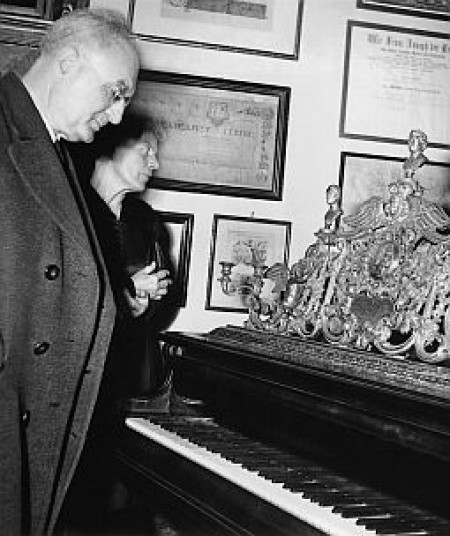
12 April 1891 Győr – 17 September 1974, Budapest
Dezső Rados, one of the most important Hungarian violin teachers in the second half of the 20th century, was born in Győr on 12 April 1891. He began teaching even before entering the Music Academy: at secondary school he couched the younger pupils in violin, sol-fa, and music theory. At the Music Academy he attended the class of Gyula Mambriny (1874-1928), a one-time pupil of Jenő Hubay, and János Koessler, who was an excellent soloist and chamber musician, and also possessed a wonderful pedagogical sense. A decade later, in 1922, Mambriny became head of the violin teacher training department, but during Rados's time at the Academy the department was still led by József Bloch (1862-1922), whom Rados regarded all his life as a model. As a pioneer of Hungarian violin pedagogy and methodology, Bloch wrote instructive works on violin playing, fingering exercises and tone sequence; his book, The Methodology of Violin Playing, was part of the compulsory curriculum at the Academy for decades after his death. Dezső Rados continued, further developed, and in some areas changed the theory and practice of the methodological system worked out by Bloch, thereby making a significant contribution to the success and the preservation of the values of the Budapest school, marked by the names of Jenő Hubay, and later Zoltán Székely, József Szigeti, Ferenc Vecsey and Ede Zathureczky.
Dezső Rados took up a teaching post at the Fodor Music School in 1920. Each year several of his talented pupils gained places at the Music Academy and the National Conservatory. As it appears from a letter of recommendation kept in the Bartók Archive, the success of his pedagogical method was noted by Béla Bartók as well. In 1940 he was appointed director of the Goldmark Music School. During the Second World War he played a decisive role in the creation of organised music teaching for students of Jewish origin, excluded from the official school system. From 1945 for two years he taught at the National Conservatory, and then in 1947 he returned to his alma mater as professor of the violin department of the Ferenc Liszt Music Academy. He retired in 1959, but – as specialist in didactics and methodology – he carried on teaching.
The violin studio led by him, which undertook the further training in methology of teachers possessing artist-teacher or violin teacher diplomas, began functioning in the 1966/67 academic year within the framework of the violin department. At the launch of the studio Dezső Rados gave an interview to the journal, Muzsika (Music), in which he summarized his artistic and pedagogical beliefs. "Modern violin literature, but in general, the modern approach to the art of violin playing, demands deeper analytic knowledge from the artist, greater theoretical, aesthetic and also music historical knowledge (….) The methodology deals with how the bow should be held, with shift, ornamentation, types of bowing, vibrato, fingering, and perhaps primarily with tone, that is, the formation of sounds. This latter is one of the prime requisites for good violin playing. The most important factor in the success of the Budapest school was the fact that the masters taught the most modern instrumental techniques developed in the western schools at that time, and built on achieving a romantic sound learned from the great gypsy bandleaders… The style of the great gypsy bandleaders was very well suited to conveying great romanticism, in general great lyricism, heated drama. This style of playing has still not lost its attraction, but the changes in tastes have nonetheless brought many alterations… The violin is the most sensitive instrument, because it is in the most direct contact with the human being. The body of the violin and the bow must be organically connected with the human body."
Dezső Rados died in Budapest, on 17 September 1974, at the age of eighty-four.
A. R.


